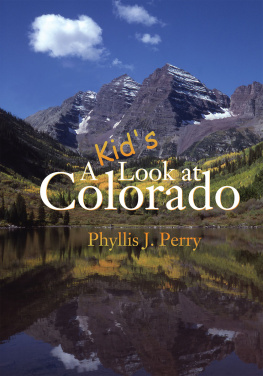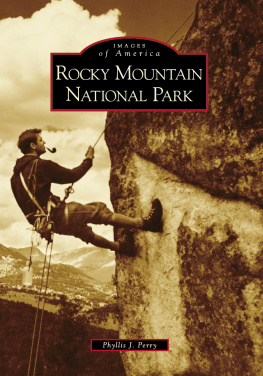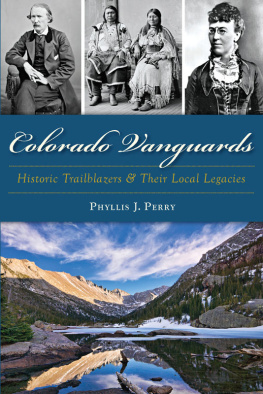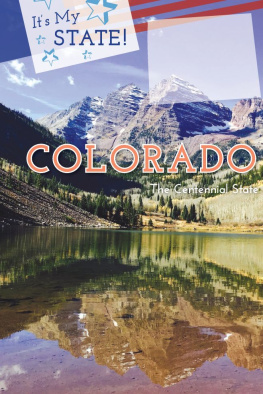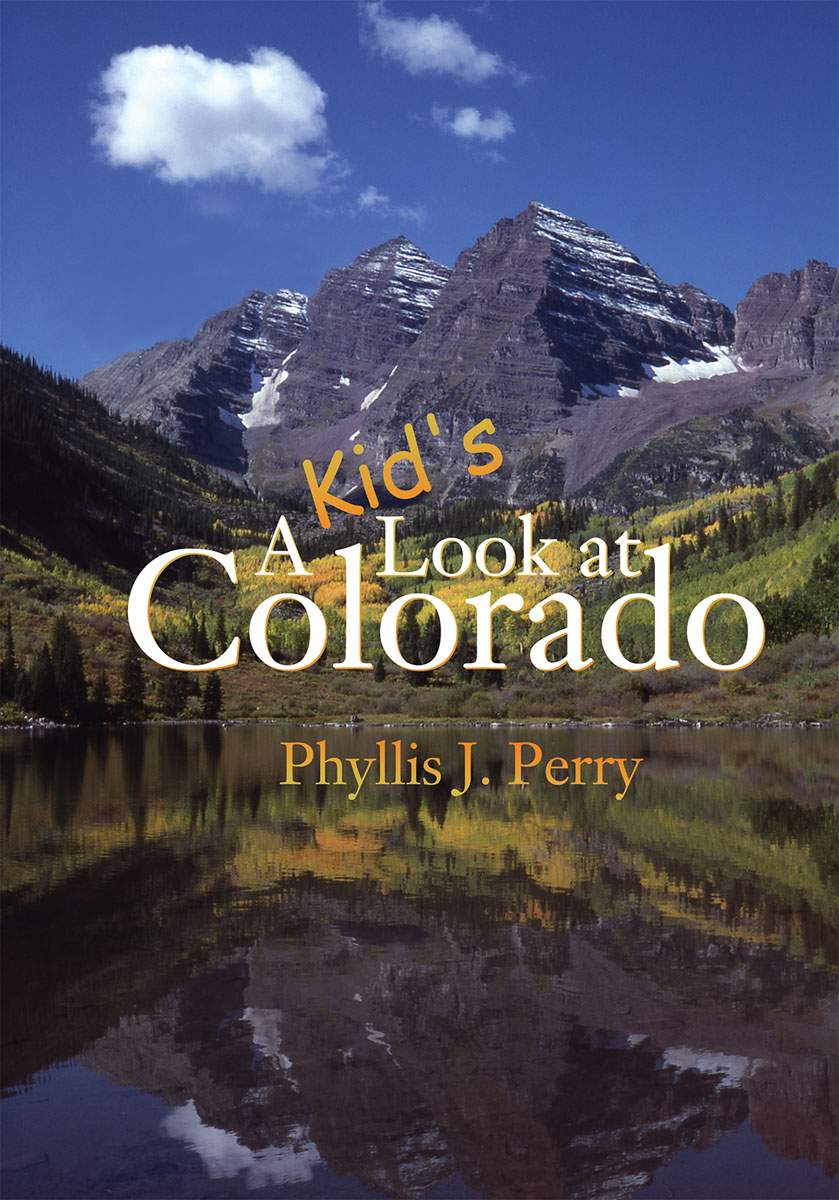

Text 2005 Phyllis J. Perry
Photographs 2005 David L. Perry unless otherwise noted
All rights reserved. No part of this book may be reproduced, stored in a retrieval system, or transmitted in any form or by any means, electronic, mechanical, photocopying, recording, or otherwise, without written permission from the publisher.
Library of Congress Cataloging-in-Publication Data
Perry, Phyllis Jean.
A kids look at Colorado / by Phyllis J. Perry.
p. cm.
Includes bibliographical references and index.
ISBN 1-55591-856-5 (pbk.)
1. ColoradoJuvenile literature. I. Title.
F776.3.P46 2005
978.8dc22
2005023580
ISBN-13: 978-1-55591-856-9
Printed in the United States of America
0 9 8 7 6 5 4
Editorial: Susan Hill Newton, Faith Marcovecchio
Cover image: Maroon Peaks and Lake near Aspen, Colorado, by David L. Perry
Brand designs used courtesy of www.barbwiremuseum.com
Fulcrum Publishing
4690 Table Mountain Drive, Suite 100
Golden, Colorado 80403
800-992-2908 303-277-1623
https://fulcrum.bookstore.ipgbook.com/
Dedication
I dedicate this book to all those who enjoy colorful Colorado and offer thanks to the staff at Fulcrum Publishing, who have provided steady support and expertise throughout. Id also like to give thanks to the many people who have taken their valuable time to write, listen, and talk with me about this project. They have answered questions, loaned books and pamphlets, directed me to sources of data, dug out bits and pieces of information about the fascinating history of Colorado, and offered encouragement when it was needed most. I am especially indebted to C. J. Cassio, Jere DeBacker, Marie Desjardin, Jill Fernandez, David M. Hays, Mary Rose Martorano, Casey J. Miller, Janet M. Miller, Claudia Mills, Ann Nagda, Leslie OKane, Sid Weathermon, Celeste Woodley, and Elizabeth Wrenn.
And I offer my deepest appreciation to David L. Perry, whose photographs so beautifully illuminate the text.
Contents
Introduction
A Patchwork Quilt of History
Colorado is a beautiful and fascinating place. Its past and present are filled with tales as varied as the many people who have contributed to the states colorful story. Each person, place, object, or event is like a tiny swatch of fabric that adds to the overall design of an intricate patchwork quilt of history.
Prehistoric people in Colorado left behind clues of their life stories that scholars now try to interpret from the mysterious ruins of kivas and cliff dwellings. Tales of Native Americans who camped and hunted in Colorado echo in their traditional myths of plants and animals, in the enduring curse of Chief Niwot of the Boulder Valley, and in the indelible memory of the Sand Creek Massacre.

Mesa Verde National Park.
The mysterious legends of the fabled Golden Cities of Cibola and the frightening echoes of ghostly voices surrounding the Purgatoire River remind us of the days of the early Spanish explorers. These were followed by the tales of trappers, traders, and gold seekers who swarmed into the state, later leaving behind a legacy of abandoned mines, ghost towns, and remnants of early forts.
Stories are revealed in diaries recounting the adventures of the brave folk in wagon trains who made their way west through Colorado. Some stayed and joined the ranks of miners, railroaders, lumberjacks, ranchers, and farmers and then eventually brought their families and settled the land. Their tales relate to building train tracks over impossible passes, doing backbreaking work on farms and ranches, and taking part in the rich strikes and terrible busts in the goldfields.
Legendary figures emerge such as Baby Doe Tabor, who died at the Matchless Mine, Silver Heels, who nursed the sick through a smallpox epidemic in Alma, and hardworking burros that toiled underground and came to be known as Rocky Mountain Canaries.
Some of Colorados beauty has been preserved in parks for people to visit. The crown jewel among these is Rocky Mountain National Park. Connected with this magnificent place are stories of Enos Mills, credited with being the father of the park, Lord Dunraven, who bought up acres of land for a private hunting preserve, and the exploits of fantastic characters such as Isabella Bird and Rocky Mountain Jim.

Lion Lake No. 2, Rocky Mountain National Park.
Countless other Colorado tales relate to the constant struggle to establish towns and cities, schools, and government, and the work involved in building a strong and growing state economy.
In this book, every chapter deals with a segment of the states past. Woven into each are stories that illuminate that colorful history. Only by piecing together all the tales from all the regions can one finally glimpse the complexity of the whole design that represents the state of Colorado.
Location
Where is this beautiful state? Colorado is close to the center of the western half of the United States. Its northern border is almost halfway between the equator and the North Pole. Six other states are its neighborsto the west is Utah; Wyoming and Nebraska are to the north; Nebraska and Kansas border Colorado on the east; and Oklahoma and New Mexico are to the south. Four Corners in southwestern Colorado is the only place in the United States where four states meet. The four states are Colorado, New Mexico, Arizona, and Utah.
The Rooftop of the Nation
Colorado is noted for its towering mountains. On seeing the amazing view from the top of Pikes Peak in Colorado, Katharine Lee Bates in 1893 wrote her famous song, America the Beautiful. She describes the spacious Colorado sky, its amber fields of grain, and the majesty of its purple mountains.
The Rocky Mountain region is on the Continental Divide. The divide is a ridge of mountains that runs north and south through the United States. From one side of the divide, waters flow to the west. From the other side of the divide, waters flow to the east. This divide separates the eastern and western slopes of Colorado.

Continental Divide.
Beautiful Colorado is shaped like a rectangle with an area of 103,595 square miles. It is 276 miles from north to south and 387 miles from east to west. Sometimes Colorado is called The Rooftop of the Nation because it has the highest average elevation in the United States at 6,800 feet.
But in addition to mountains, there is low land, too. Lush grasslands and many rivers and valleys are found in Colorado. At one point, just east of Holly, the Arkansas River bed is only 3,385 feet above sea level.
Three Parts of Colorado
Colorado can be divided into three main parts: the Great Plains, the Plateau, and the Rocky Mountains. The Great Plains cover about two-thirds of the states land area. The plains reach from Kansas and Nebraska across eastern Colorado to the Rocky Mountains. The Plateau region makes up the western part of Colorado, containing mesas, or flat tablelands, as well as valleys along the Colorado and Gunnison Rivers. Near the border of Utah, Colorado becomes dry and desertlike.
Next page
